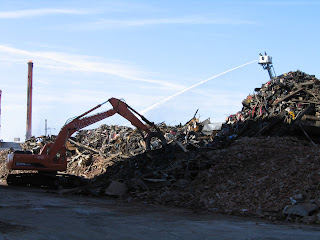Back in 2011 we posted this video from the Occupational Safety and Health Administration (OSHA) Respirator Safety Video discussing the difference between respirators and surgical masks is a very good video to better understand the difference between these two pieces of equipment that can protect you from particular hazards.
There is a lot of confusion currently (during the coronavirus pandemic) about the difference between these two items. The video above gives you a basic understanding. To expand on that information realize the surgical mask does not protect the user from what's in the air its not designed to be a filter. It's designed to protect the public from what the individual wearing it has. Hence its popularity in Asian countries where it is considered a courtesy to wear it when you're sick. See the chart below for more differences.
The filtering facepiece respirator was designed for the purpose of being lightweight, easy to use, and protect workers from particulates in the air but they are single-use (they should not be used for more than 8 hours and you throw them away). If you're interested in learning about this mask's history read this article written in Fast Company "The untold origin story of the N95 mask". Unfortunately, like most respirators, these need to be fit tested to ensure they fit correctly and also need to be fit checked to ensure it is placed on the face correctly. An interesting point is that air will take the path of least resistance, and that is why respirators need to be fit tested to make sure all the air goes through the filter(s). It is also why workers with facial hair cannot wear tight-fitting respirators. The facial hair creates a path of least resistance into the respirator. Digg posted an interesting video that shows a person coughing and the difference between a surgical mask (designed to protect the public) and an N95 respirator (designed to protect the user). Properly putting on and taking off the N95 respirator is also important to make sure all the air goes through the filter. See the video below to ensure you are doing this correctly. Remember you should follow the manufacturer's procedures when putting on or taking off the respirator.
One more point, don't touch the filter it could be contaminated. If you do immediately wash your hands or if unavailable use alcohol-based hand sanitizer. If you're sick you wear the surgical mask and keep your distance (3 feet or arms-length or the preferrable 6 feet) or better yet stay home! If you are trying not to get sick you wear the N95 respirator. However, if you have not been fit tested with the respirator, have not performed the fit check, have facial hair, or not wearing it properly then the respirator would be better off in a Doctor, Nurse, or Emergency Responders hands to help them with the shortages they are experiencing. Just keep your distance or better yet stay at home!!!









